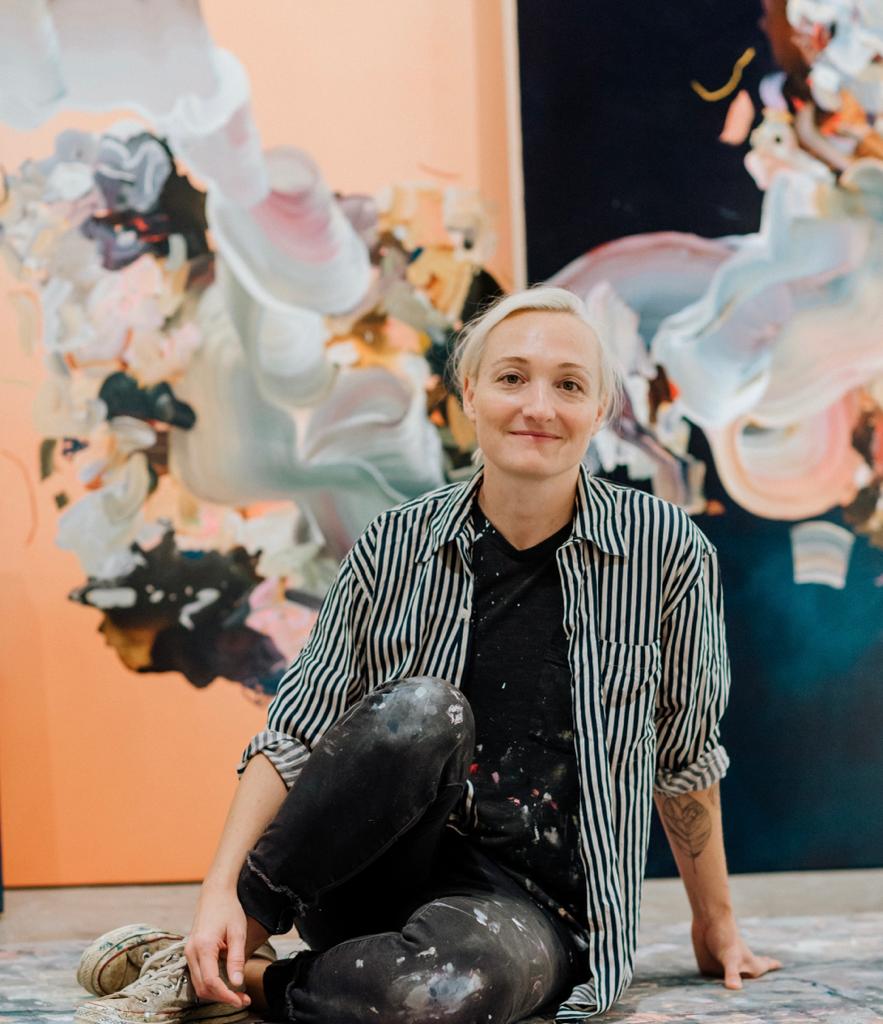Meet With Well known Painter & Artist: Janna Watson From Canada

What or who do you consider to be the greatest influence on the development of your art?
The greatest influence on the development of my work has been the work itself. The more I paint, the more I understand my materials and what they want to do. In turn, my recent discoveries of Tao I Ching and the concept of wu wei or effortless action resonated deeply in my work.
You are currently working with a stunning and subtly nuanced colour palette, which balances soft, luxuriant neutral shades with pops of peachiness and electric brights. How do you approach developing and curating your palette?
In last year’s exhibitions, I explored the depth of blue. As a young child, my grandfather showed me how painting abstraction is about capturing the “essence” of everything, and how energy can be felt but not seen. His words continue to push my practice. I was also drawn to the relationship between the moon, the ocean, and my own relationship to the “essence/moodiness” of blue.
While focusing on this last year’s show, I decided that I’m not done with emulating the sky, and so I decided to call the show ‘Skywriting’. During this time (November ’22), it was the most dreary month in Ontario where the sky had turned slate grey. Each night, I walked to the end of my road where there’s a large open field to watch the sunset. What you see in this series is what I saw in the cold winter sky.
Your trademark surreal, poetic and humorous titles, like my favourite “Mercury Is In the Microwave” from your current collection, create wonderful interplay with your sophisticated paintings and enable them to exist as complete little worlds of their own. How important are humour and poetry to you and your creative expression?
I use my titles to play with my present state of mind. What makes me the happiest are the uncanny, subtle moments in life that happen second by second. Life can be unexpected and unconventional. We tend to praise and blame the sky for a lot of unpredictable shit that befalls our terrestrial homes. Its unpredictable nature makes me laugh and reminds me daily to not take life—or my work for that matter—so seriously. A subject matter’s negative space, colour and composition can be lightweight by nature; the abstract can elicit feeling without necessitating instruction. I see my titles as important to the work. The titles are a layer added to each composition that bring some direction to our variable world.
You have noted that the concept of wu wei was significant to your creative process for your new exhibition Skywriting. Can you share how you discovered it, what the concept is behind it, and how it affected your process?
We tend to look to the heavens for purpose and understanding. My recent and evolving spiritual quest has been resonating with indigenous beliefs of reciprocity with nature. I’m also intrigued with Tao’s belief in a source of power and not a god; rather how a living energy is divinity. While learning about Tao, I am inspired by calligraphy gestures as art forms and the idea of instinctive force. For me my painting has become a daily discipline and a spiritual practice. When a painting feels like it has created itself, that’s when I know that I’ve made a strong work. This is the kind of natural flow that I want in all my life. It feels like harmony. The way the clouds move reminds me of wu wei and the skywriting of it is obvious to me.
The gestures you make on your panels are of many different shapes and sizes – can you describe the types of brushes you use and what drew you to them?
My brushes have been pivotal in developing depth in my compositions. My earlier work consists of a lot of the same brushstrokes in smaller bundles. It has been amusing exploring dimensions using seven different brushes with silky bristles. They have a charming place in my collection because they are all flat, wide, and cute. They have better haircuts than me.



